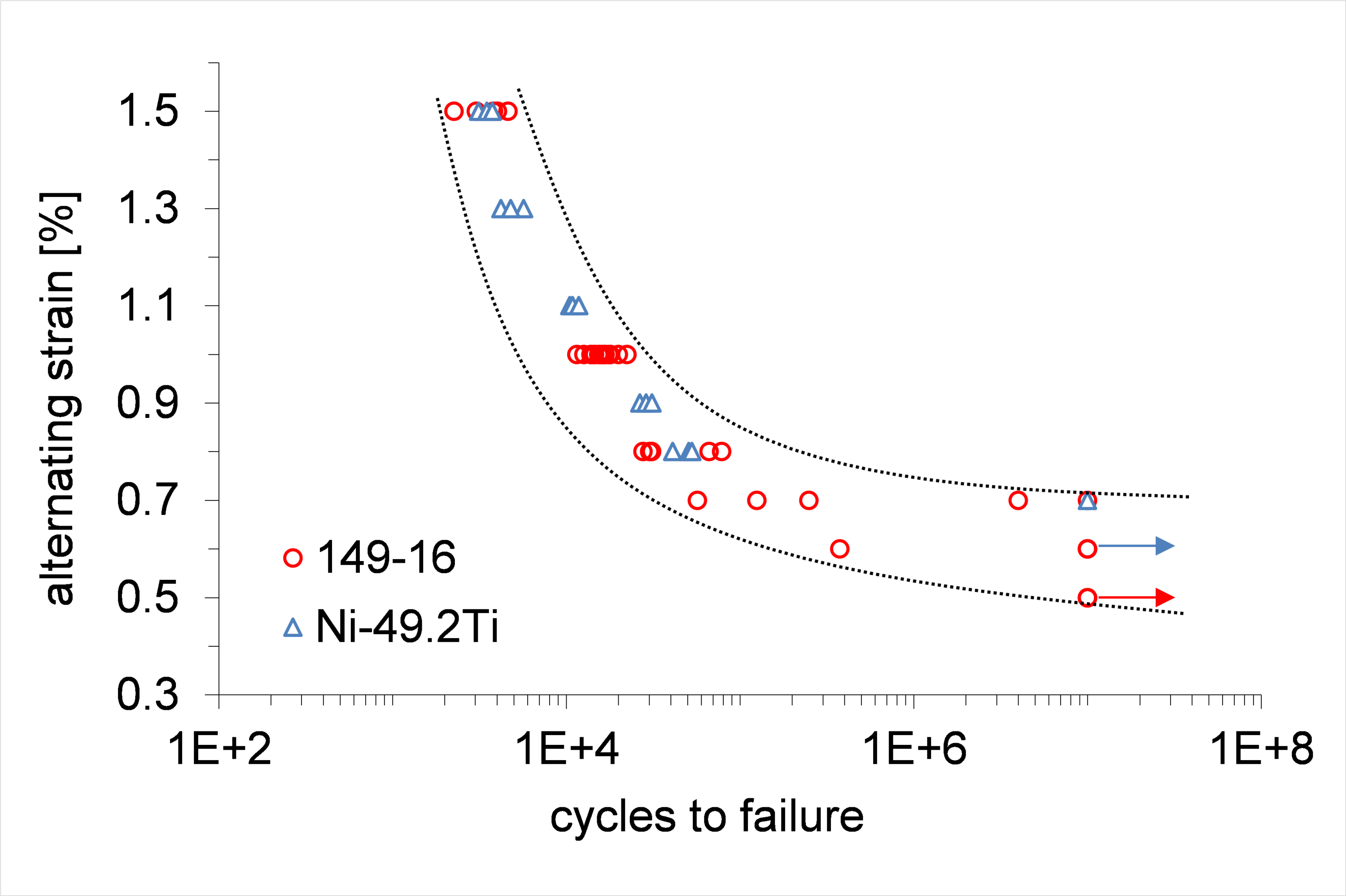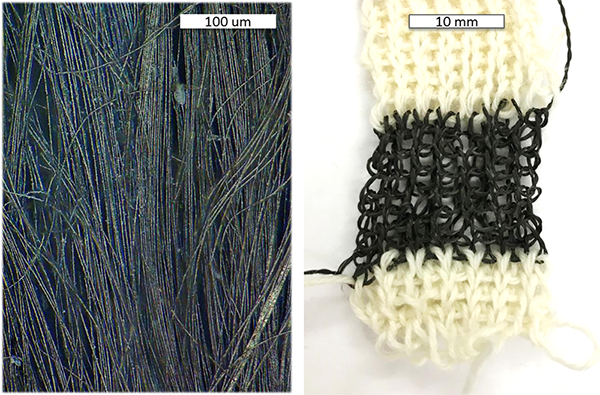R&D
- Apr 1, 2018
A Look at Progress in High-Performance Wire Technology
S. Cai, PhD, R&D Engineer
A.J. Griebel, Sr. R&D Engineer
R.C. Dillion, R&D Engineer
B.A. Liechty R&D Engineer
J.E. Schaffer, PhD, Director of R&D
Progress in Nickel-free Shape Memory Alloys (SMA)
Commercially available nanocrystalline Nitinol wire is capable of well over 8% total recoverable strain [1], whereas conventional beta titanium alloys including the venerable beta III systems and gum metal variants max out at about 2-3% total recoverable strain in uniaxial tension [1-3]. Thus, while useful, conventional beta alloys cannot directly “stand-in” for Nitinol in medical device design.
While it is true that some designs do not need the full recoverability inherent to medical grade Nitinol, many designs including vascular self-expanding stents, aneurysm diverters, and even bone compression fixtures do effectively utilize most of Nitinol’s remarkable resilience. In cases where some surface wear may occur such as in filament-to-filament abrasion in medical textiles, or in spinal fixation devices, passive Ti-oxide scrub-off and resultant wear-corrosion can lead to nickel sensitization [4].
Significant progress has been made since our last update. Recoverable strains of up to 6% have been demonstrated [5] with early rotary beam [R = -1] fatigue in 37°C phosphate-buffered saline, pointing to NiTi-like strain-fatigue durability with runouts in the vicinity of 0.40% alternating strain. Further, we are working to establish commercial robustness from supply chain through finish wire subassemblies with a target completion date of early 2019. Research-grade prototypes are available today across most product forms including round wire, strip, shaped wire, and cable assemblies.

Figure 1. Rotating-bend fatigue response of 0.25 mm wires comprising (blue triangles) Ni50.8Ti49.2 (NiTi #1), and beta-Ti investigational alloy (TiNbZrHfSn) 149-16 at R = -1, 37 deg. C conditions tested with immersion in phosphate-buffered saline.
Functionalized NiTi Spun Yarns and Textiles
In May 2017 [6], we reported on shape memory alloy (SMA) fiber with diameters of less than 8µm (~.0003”), and even as thin as only several microns, produced by the cumulative drawing/rolling and bonding technique. This method has been used to make other more conventional microscale metallics [7]. Active fiber forms have already been explored for use in complex textile production for advanced function [8]. Since our initial report, our team, including Dr. Julianna Abel’s, University of Minnesota-based, smart materials design and synthesis laboratory, has succeeded in producing simple fabrics from microscale Nitinol fiber metal via a spun yarn and knitting method. Further scientific results on this work will be presented at SMASIS 2018. Visit our team at the ASME 2018 Conference on Smart Materials, Adaptive Structures and Intelligent Systems (SMASIS) to be held September 10-12, 2018 in San Antonio, TX.

Figure 2. A close-up of Nitinol fiber with a titanium oxide coating and initial sock-knit prototype toward functional characterization and design of textile smart materials for medical and aerospace applications.
For more information about our latest research update, or how we can partner with you on lifesaving devices, we'd love to hear from you. For questions, please contact: [email protected]
References:
[1] Schaffer, Jeremy E. "Structure-property relationships in conventional and nanocrystalline NiTi intermetallic alloy wire." Journal of materials engineering and performance 18.5-6 (2009): 582-587.
[2] Cai, S., et al. "Influence of short time anneal on recoverable strain of beta III titanium alloy." Materials Science and Engineering: A 562 (2013): 172-179.
[3] Talling, R. J., et al. "On the mechanism of superelasticity in Gum metal." Acta Materialia 57.4 (2009): 1188-1198.
[4] Shabalovskaya, Svetlana A. "Surface, corrosion and biocompatibility aspects of Nitinol as an implant material." Bio-medical materials and engineering 12.1 (2002): 69-109.
[5] Shape Setting of High Performance Beta Titanium SMA
[6] Ultra-fine Shape Memory Alloy Yarn for Textiles
[7] Mirvakili, Seyed M., et al. "Niobium nanowire yarns and their application as artificial muscles." Advanced Functional Materials 23.35 (2013): 4311-4316
[8] Abel, J., Luntz, J., & Brei, D. (2012). A two-dimensional analytical model and experimental validation of garter stitch knitted shape memory alloy actuator architecture. Smart Materials and Structures, 21(8), 085011.
Disclaimer: Our updates are sneak peeks of what our R&D department is working on. This is not meant to imply that we have what is referenced above ready for robust serial manufacture.